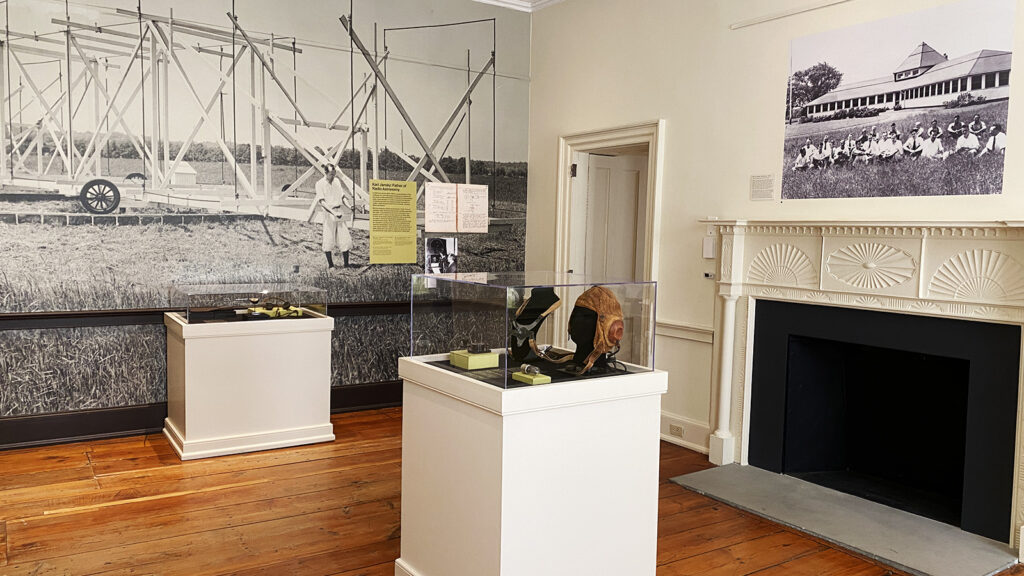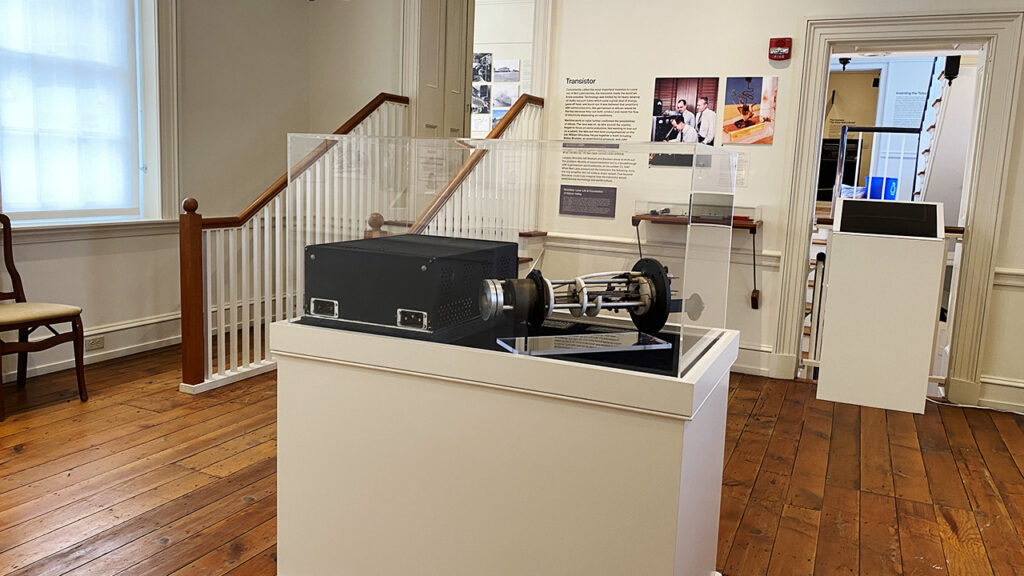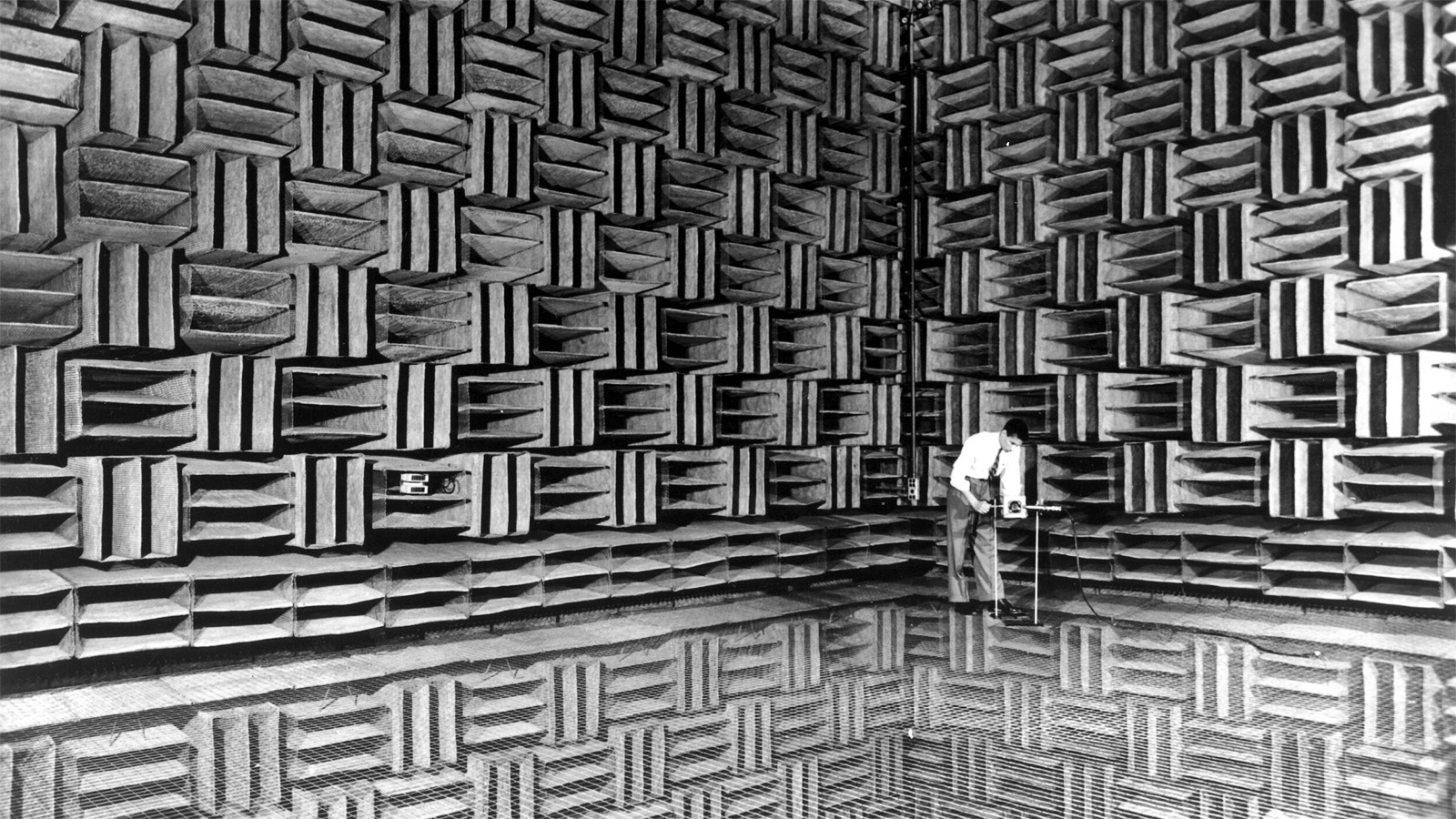Long before Silicon Valley emerged as America’s tech utopia, there was New Jersey. In 1941, Bell Labs, the research and development wing of AT&T, landed in the community of Murray Hill, NJ, where it would pioneer technologies that remain vital today. At its peak in the 1960s, the company employed some 15,000 people — from engineers to executives, linemen to scientists — masterminding inventions not limited to the transistor, the laser, and the UNIX operating system. The center was fueled by innovation as much as an intellectual edge, making it no mere laboratory, but what its one-time president Mervin Kelly dubbed “an institute of creative technology.”
For Morven Museum & Garden, itself a New Jersey institution documenting the region’s cultural heritage, developing an exhibition around the local icon made sense. “What we loved about once we started digging into Bell Labs is how deeply rooted it was in New Jersey,” says Elizabeth Allan, Morven’s Deputy Director and Curator. “It hits our mission really hard and celebrates New Jersey history.”
Hence, Ma Bell: The Mother of Invention in New Jersey, which opened on March 13, arraying the foundational creations and concepts that emerged from Bell Labs’ NJ base. Dating between the 1920s and 1980s, the artifacts on exhibit illustrate the lab’s breakthroughs in areas from radar to solar panels to telephone communications, and have been sourced from organizations including the AT&T Archives and History Center, MIT Museum, and the Historical Society of Princeton.

For Ma Bell, the museum sourced artifacts from various organizations and put out a call for contributions from New Jerseyans for their personal experiences with Bell Labs. Image: Installation view of Ma Bell at Morven, with historic images from AT&T Archives and History Center, and the National Radio Astronomy Observatory / Morven Museum & Garden
Also included: the voices and perspectives of everyday New Jerseyans who once worked at Bell Labs — contributions resulting from a crowdsourcing campaign that Morven launched in the summer of 2021. “When we were first talking about this exhibition, everybody kept saying, ‘Oh, my aunt was an operator’ or ‘my dad worked at Bell Labs’,” Jesse Gordon, Assistant Curator and Registrar at Morven, tells Jing Culture & Commerce. “So we thought, okay, everybody’s going to want to tell their story.”
And they did. When Gordon put the call out online “for people to share their memories, photos, and artifacts,” about 50 individuals responded with their various experiences, whether they be working on lasers or the valve system, or meeting their spouses while working at Bell Labs.
“When you go to the galleries, you’ll see some of these artifacts on view,” she says. “We have lines and helmets. We actually have a textbook from a man who worked on lasers and somebody came to interview him for this middle school science textbook.” A dedicated spot within the exhibition itself continues to invite visitors to submit their memories of Bell Labs.

The crowdsourcing effort activates and engages a museum’s community, transforming visitors into participants in the institution’s programming. Image: Installation view of Ma Bell, with historic images and objects courtesy of private lenders and AT&T Archives and History Center / Morven Museum & Garden
In spotlighting the people behind the innovation, these collected stories and artifacts humanize what could be a high-walled tech story. As Allan puts it, “It’s not just about the brilliant scientists [at Bell Labs], who are of course very important. We were also interested in the New Jersey people who made this possible.” And it’s this “human element,” per Allan, that will make the exhibition newly relatable across generations. “When we get into things that maybe not so many people have had experience with, like building a satellite or putting in fiber optic cable,” adds Gordon, “it is important for visitors to be able to relate to that on a personal level.”
Besides enriching the exhibition’s storytelling, such a crowdsourcing effort effectively activates and engages a museum’s community, transforming visitors into participants in the institution’s programming. It’s outreach that’s particularly proven useful in capturing shared cultural heritage — in projects like Collections of Ghent, and SFMOMA and The North Face’s upcoming digital archive — and in turn, helps center the museum within the community. “Museums,” as Gordon reflects, “are really great places to start a conversation.”
Following its first crowdsourcing initiative, Morven has recently put out a call seeking New Jersey-made case clocks for a planned 2023 exhibition. Ma Bell, after all, demonstrated just how rich a resource the NJ community represents. “I don’t know that every time will be as strong as it was for Bell Labs, but I do think it’s shown us that this is an easy thing. It’s one more level of feedback and data,” says Allan. “So don’t overthink it; just ask.”



